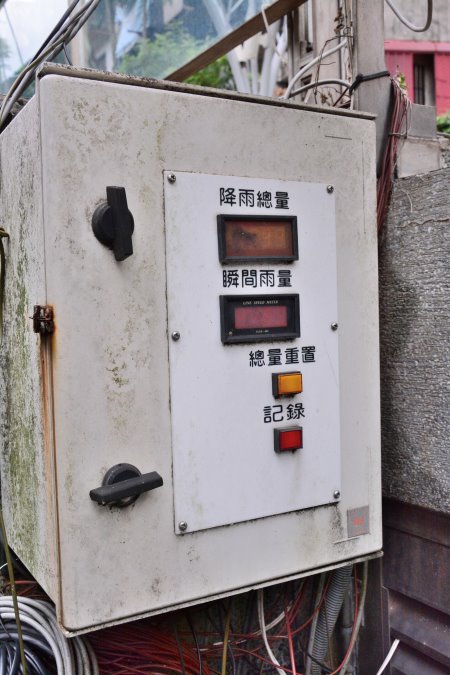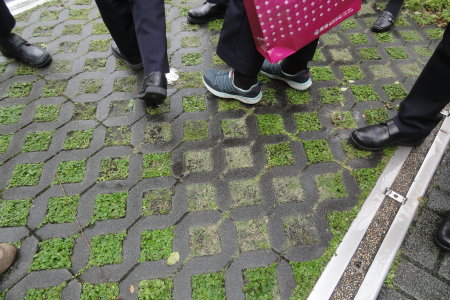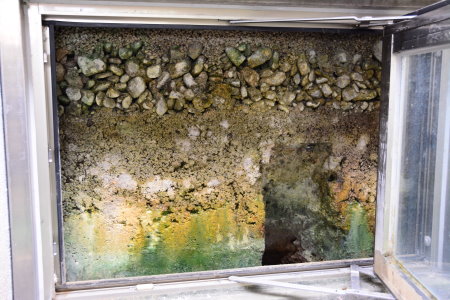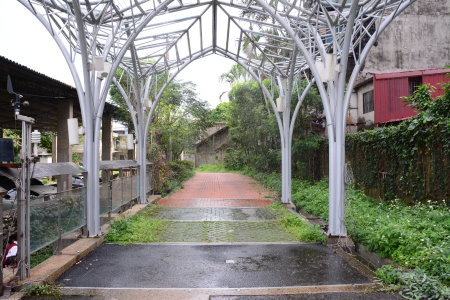Resources
★Transcripts:
1.Xizhi Interview Transcripts
2.Water Resources Agency Transcripts
3.Mr. Jui-Wen Chen Interview Transcripts
4.Mr. Shen-Hsien Chen Interview Transcripts
Water Resources Agency Transcripts
Interviewee: Mr. Jie-Liang Yang, Chief of Conservation Division
Interviewers and organizer: all team members
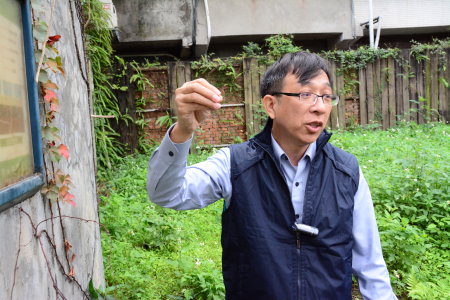

(1)What made you decide to set up the testing facility of permeable pavement here? When was it built?
The Water Resources Agency has installed four different types of pavement under the roadbed permeability engineering of the “Green Building Promotion Program.” It was built in 2003 by the Construction and Planning Agency of the Ministry of Interior. This massive project cost 5.46 million NT dollars.
The Water Resources Agency provided the facility to build models of four types of permeable pavement. The research plan was developed and ran by the National Central University. The four types of pavement include the permeable asphalt, permeable bricks, grass bricks, and the JW Eco-Technology pavement.
I can show you how each of the permeable pavement works later.


(2)How are each of the permeable pavement tested?
Please look back, the entire garage roof is used for collecting rainwater. The rainwater is stored in a tank and will be used for the test. What kind of test we do? We do the rainwater test by simulating raining to observe the permeable pavements.
Basically, it uses the water from the tank and pump it to the sprinklers to simulate rainfall. Underneath the road, we have the see-through glasses, so that we can observe how the rainwater infiltrate through the soil. Currently, the National Central University runs the experiment for the whole section here. We will now turn the water on so you can observe it by yourselves.
The switches below can adjust the amount of the rainfall from the sprinklers, and the boxes beside it can help spread the water more evenly. Let’s start the water now. (The simulating rainfall starts.) Let’s walk downstairs and observe the infiltration through the see-through glasses. We use the same materials and building method for the roadbed, the only differences are the types of pavements. When we do the real experiments, we will empty the storage tanks, even let it air dry for several days, to ensure the accurate measurements.
We only need to sprinkle a short time to see the differences. In today’s condition, the JW Eco-Technology pavement works the best, but, in fact, the different pavements will be used in different places. Take these hollow grass bricks for example, they are used in parking lots because they are cheap and have good permeability. Without considering the load-bearing capacity, grass bricks will be good enough. On the other hand, most roads use asphalt because it is considered as the “flexible pavement,” so that cars can drive on it more comfortably. There are two types of asphalt pavements, permeable and non-permeable. The permeable asphalt pavement costs more.
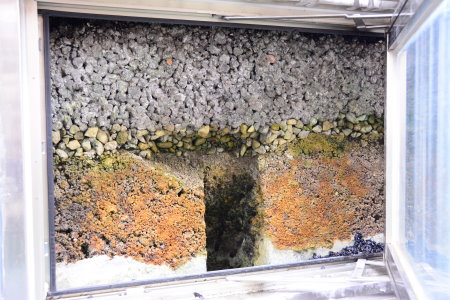
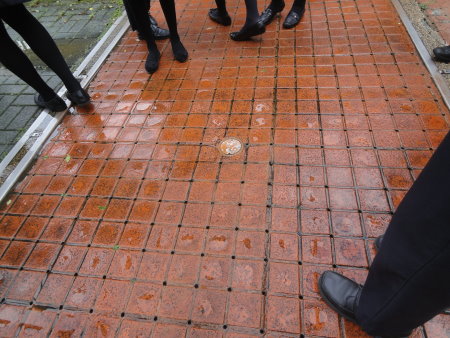
(3)How did you record the measurements of the permeabilities of the pavements?
The National Central University has the detailed experiments and the results. You’ll have to ask them. However, as you can see, we have the rain gauge to record the rainfall in each stage. We have the thermometer to measure the cooling effect of each pavement. We also have the see-through observation boxes to observe the condition of infiltration and runoff.
